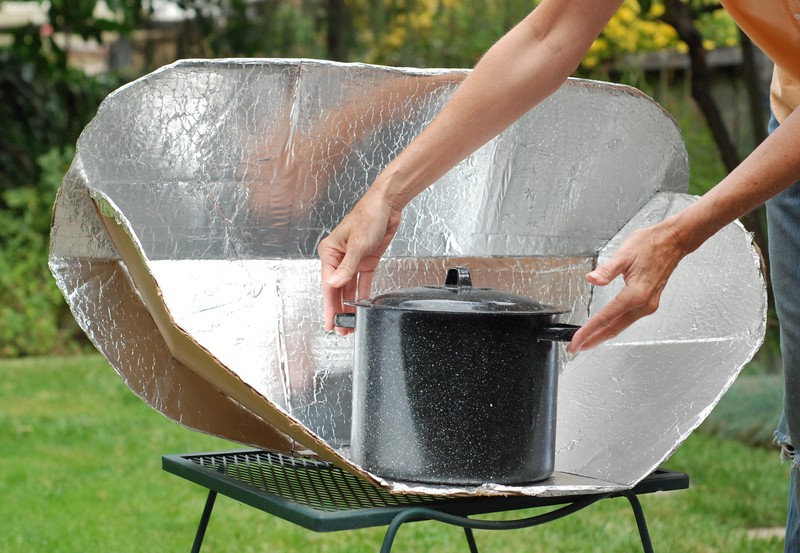No matter how much food, water, and supplies you have stockpiled, chances are you may need even more. A collapse might last a lot longer than you expected or you might find yourself eating more if you are very active.
This is why it is important that you know four different ways to preserve more food in a solar oven. The power might be out and a solar oven may be your best option for stockpiling even more food!
Four Ways To Preserve Your Food Using A Solar Oven Are:
Most solar ovens only reach 325 degrees F, maximum, on a sunny day so you do have some limitations. Also, since it’s tough to maintain a consistently high temperature, you can’t really pressure can in your solar oven.
You can cook in it, you can roast in it, you can dehydrate in it, you can even can high-acid foods in your solar oven, but it’s not safe to can low-acid foods in it. There’s no way to guarantee that the temperature will stay high enough long enough to kill the botulinum toxin that causes botulism.
Canning High-Acid Foods in a Solar Oven
If you’re canning tomatoes, it’s still a good idea to add a bit of vinegar or lemon juice just to boost the acid content. Fruits that are low-acid include:
Figs
Pears
Melons
Bananas
Dates
Papaya
PersimmonsStart in the morning on a clear day so that you have plenty of time to get it warmed up and give your cans plenty of time to process.
Start by sterilizing your jars and equipment so that you reduce the risk of contaminating your canned goods. Prepare fruit just as you would for regular canning.
Fill jars with fruit, sugar, water or juice. Slide spatula down the sides to get as much air as possible out. Leave head room at the top of jar as recommended by the instructions for your particular fruit.
Place jars in solar oven, close lid. Once the proper temperature has been reached, the fruits will begin to boil in jars. Process according to the recommended time for what you’re canning, starting at the time that it boils.
Remove your jars carefully. Set them where there won’t be a draft, cover with towel, cool naturally.
To test if they sealed after the jars are cool, gently press down on the center of the seal.
Dry Canning
Personally, I’ve used the oven method and it worked just fine, so I don’t see why it wouldn’t work in a solar oven. Just keep the temp low – below 250 degrees or so.
Dehydrating Food
The only trick is to keep the temperature low enough that you don’t cook it instead of dehydrating it. Prepare your meat, fruits, or vegetables just as you would for the dehydrator, place on a sheet.
Put pan or drying rack in oven, leave it in there at a low temp of no more than 150 degrees until it reaches the crisp phase. Remember that your meat or produce needs to be sliced thinly before dehydrating. Flip product from side to side every couple of hours so it dehydrates evenly.
Fruit Leather
Prepare fruit by creating smooth paste. Add sugar to the mix, but if you’re using super-ripe fruit, you probably won’t need any. Spread parchment paper on a cookie sheet, spread the fruit puree in a thin layer on the paper. Dry as long as needed to make it like leather. It will still be flexible and slightly sticky, but should stay together in a sheet.
The ways you can preserve food in a solar oven are simply amazing. You can preserve anything from fruits, meats, vegetables and even fruit leather as long as you remember some basic tips. This way making sure you have enough food during a disruptive event will not be a problem.
You can continue to stockpile and preserve food this way even if the power is out for a long time or if you have to bug out and live off the land. A solar oven and knowing how to preserve food with it may be crucial to your survival!
To find out more about preserving food using a solar oven, please visit Survivopedia.
